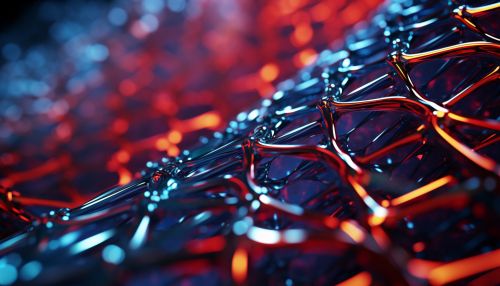Nanostructured materials
Introduction
Nanostructured materials are a class of materials that exhibit unique properties due to their nanoscale dimensions. These materials have gained significant attention in the field of materials science due to their potential applications in various fields such as electronics, medicine, and energy production. The properties of nanostructured materials are not only determined by the type of atoms they are composed of, but also by the arrangement of these atoms on a nanoscale level. This article aims to provide a comprehensive and detailed overview of nanostructured materials, their properties, synthesis methods, and applications.


Properties of Nanostructured Materials
Nanostructured materials are characterized by their small size, typically between 1 and 100 nanometers. At this scale, the materials exhibit unique physical and chemical properties that are not observed in their bulk counterparts. These properties are primarily due to the high surface-to-volume ratio and quantum confinement effects.
Surface-to-Volume Ratio
The high surface-to-volume ratio of nanostructured materials results in a significant increase in the number of atoms or molecules on the surface of the material compared to the bulk. This leads to enhanced reactivity and sensitivity, making these materials ideal for use in sensors and catalysts.
Quantum Confinement
Quantum confinement effects occur when the dimensions of a material are reduced to a size comparable to the de Broglie wavelength of the electrons. This results in discrete energy levels, similar to those observed in atoms, leading to unique optical, electronic, and magnetic properties. For example, quantum dots, which are nanostructured materials with dimensions in the quantum confinement regime, exhibit size-dependent optical properties, making them useful in applications such as quantum dot displays and solar cells.
Synthesis of Nanostructured Materials
There are various methods for synthesizing nanostructured materials, which can be broadly classified into top-down and bottom-up approaches.
Top-Down Approach
The top-down approach involves the reduction of bulk materials to the nanoscale using physical or mechanical processes. Techniques such as ball milling, etching, and lithography fall under this category. While this approach allows for the production of nanostructured materials with controlled size and shape, it often leads to the formation of defects and a lack of uniformity in the resulting materials.
Bottom-Up Approach
The bottom-up approach involves the assembly of atoms or molecules into nanostructured materials. Techniques such as chemical vapor deposition (CVD), atomic layer deposition (ALD), and sol-gel synthesis fall under this category. This approach allows for the production of nanostructured materials with high purity and uniformity, but the control over size and shape can be challenging.
Applications of Nanostructured Materials
Due to their unique properties, nanostructured materials have found applications in a wide range of fields.
Electronics
In the field of electronics, nanostructured materials are used in the fabrication of transistors, memory devices, and sensors. For example, carbon nanotubes and graphene, which are nanostructured materials with exceptional electrical properties, are being explored for use in next-generation electronic devices.
Medicine
In medicine, nanostructured materials are used in drug delivery, imaging, and theranostics. For example, gold nanoparticles, which exhibit unique optical properties, are used in imaging techniques such as surface-enhanced Raman spectroscopy (SERS). Additionally, nanostructured materials such as liposomes and dendrimers are used for targeted drug delivery.
Energy Production
In the field of energy production, nanostructured materials are used in solar cells, fuel cells, and batteries. For example, quantum dots are used in the fabrication of highly efficient solar cells, while nanostructured catalysts are used in fuel cells to enhance their performance.
